The visit to the Folio House and tour of Hell-Bourg’s Creole houses in Salazie are a real classic! It’s easily accessible and well-documented, and one of my top recommendations when you travel to Reunion Island.
Home to some of the best preserved typical Creole houses, the charming village of Hell-Bourg has been ranked among the most beautiful villages in France in recent years. With reason: along one main street lie some of the prettiest leisure houses, once inhabited by rich landowners wanting to escape the heat of the coastal lands. Once almost abandoned after the nearby thermal baths collapsed in the 1940s, the village found a new breath when Hell-Bourg’s Doctor and Mr. Folio, the new owner of the famous Folio House decided to take the houses’ fate into their hands Today, with one of the most active rehabilitation programs, the village attracts many visitors who come to admire the old architecture of these mountain houses.

A tour of Hell-Bourg’s most charming Creole houses
My best recommendation to make the most of your stay in Hell-Bourg is to book a guide to show you around and tell you the many stories and legends emanating from the village. It’s really the most complete way to get an insider’s look at the houses and understand their heritage. However, if you’re going to take a tour on your own, here is a quick itinerary you can follow. I’m going to give you a few landmarks but take discreet peeks at houses along your way! There are hidden treasures everywhere around Hell-Bourg.
Start your tour in Maison Morange, a beautiful villa with a panoramic view of the surrounding mountains. A plate in the courtyard will help you recognise the various peaks and summits. Home to the Museum of Musical Instruments of the Indian Ocean, the house is also accessible just for a free tour of its garden.

Head down to the center of the village and east past the central place with the fountain (where the Tourist Office is), up to a pretty yellow and green house framed by tree ferns on your right: it’s the village doctor’s house. Look at the characteristic architectural elements of the Creole house: rectilinear symmetrical windows, horizontal cladding, decorative mantling, pastel colours, and long lozenges on the highest part of the façade. Do the lozenges remind you of something? People familiar with ancient superstitions will know that they are supposed to symbolize the protective eye, drawn on houses to keep evil spirits away.
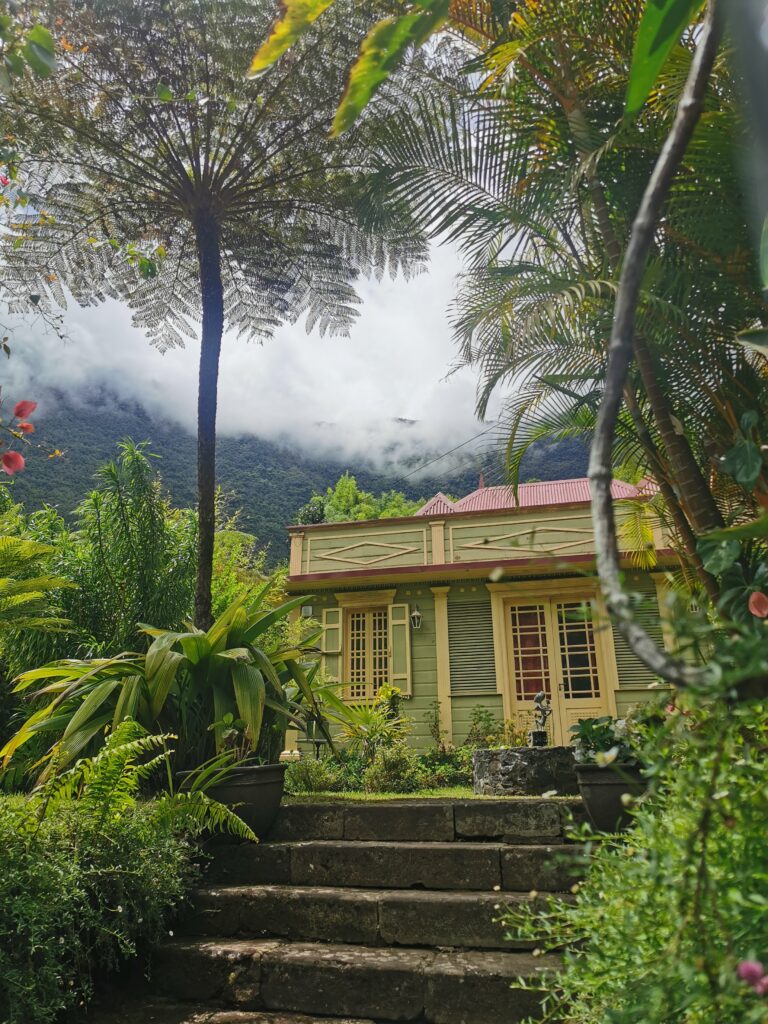
On the main street, don’t miss the couple of houses that still hold a street kiosk, yet another characteristic element, called “guétali” (from Creole language “guette a li”, meaning “look at him”. This is a recurring piece in Creole villas and a very important one: it used to allow ladies to look at the street without being seen, thus giving them the chance to spot nice-looking men passing by. Some say many romances started with a handkerchief “inadvertently” dropped from one of the guétalis…
There’s no Creole house without a luxuriant garden
The Folio House is one of the best rehabilitated in Hell-Bourg and is often a place remembered by visitors who come to Salazie. In a luxuriant exotic garden, this white-walled Creole house draws strong interest thanks to its lovely fountain, perfectly arranged garden, reading kiosk, and richly decorated house. For French speakers, this will be interesting, and an additional charm is that the visit is generally made by descendants of the Folio family. Personally, I was a bit disappointed by the guided tour – which was a bit too long and not focusing on the life of the house itself – but I can still recommend you take it if you wish to learn more about the various plants and objects you will see in the house.
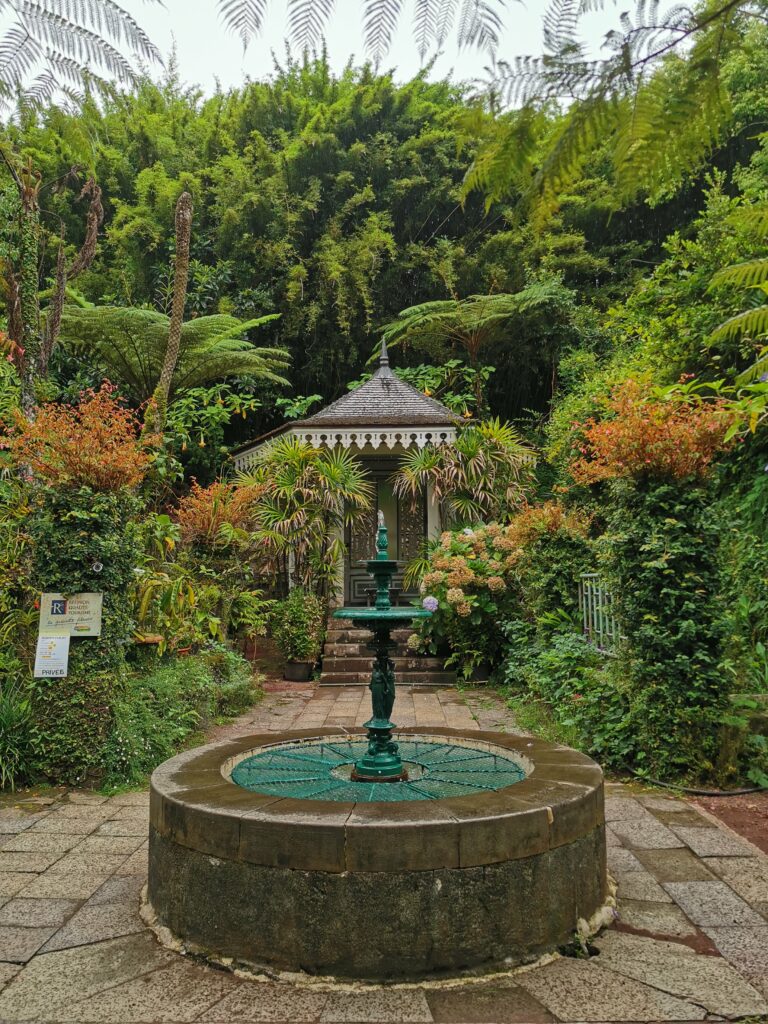

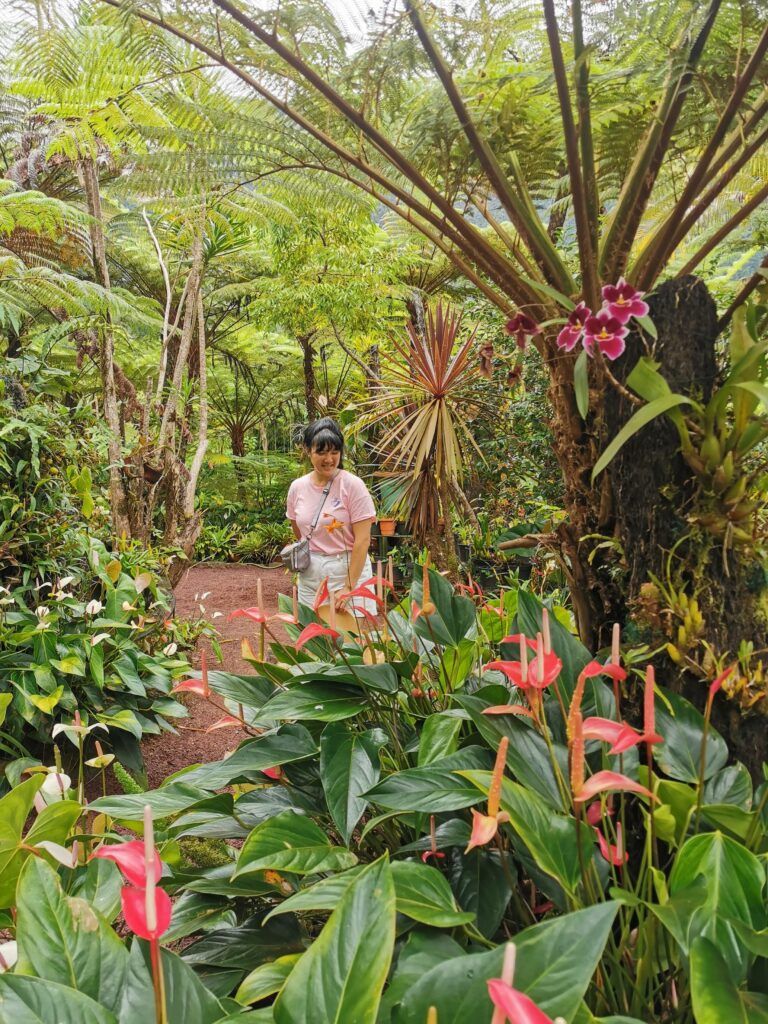
Something you will notice when visiting Creole villas, when visiting Reunion Island, and not only in Salazie, is that the garden is a fundamental element in Creole lifestyle. Traditionally, the Creole garden holds decorative flowers and trees in front of the house (a welcoming display), and at the back, herbs and fruit trees. The Creole love to cultivate collections of flowers and trees, to boast around the neighbourhood, but also to perpetuate the tradition of culinary and medicinal use of plants. This is something I never get tired of when I go back home: visiting gardens and (re)discover small unique ecosystems at the back of people’s houses. I love how the Reunionese naturally integrate nature into their lifestyles, just like our ancestors taught us to do.
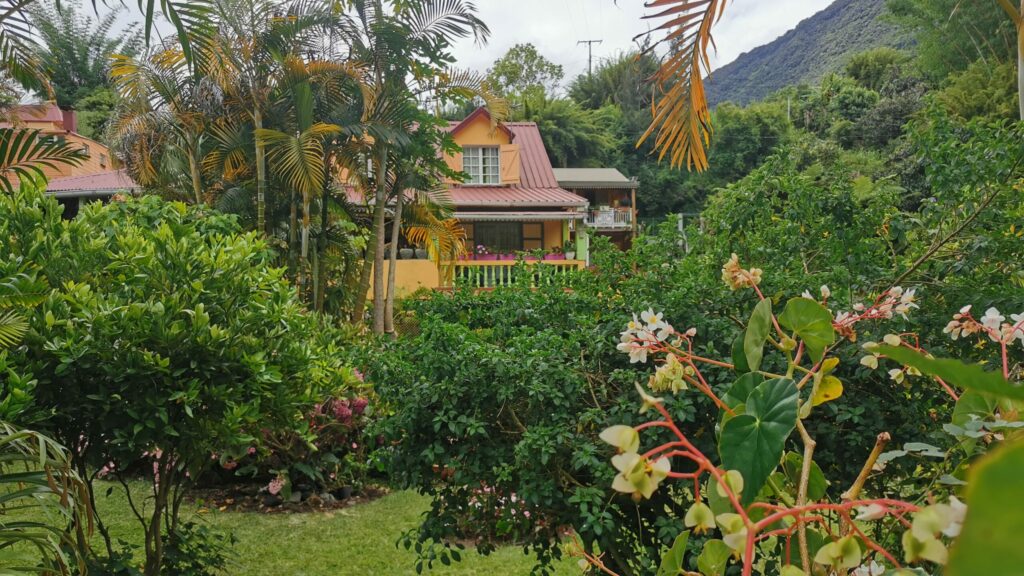
A secret peek at Achaing’s Mountain
Back to our discovery of Hell-Bourg with a last “secret” spot I really enjoyed when I took the tour of the Creole houses: head north to the village towards the cemetery (more or less) until you can find a view of the mythical Piton d’Anchaing. Sprouting majestically from the ground beyond the last houses of the village, this mountain is named after a runaway slave chief who is said to have lived in the area with his wife, Héva, and their eight children. Legend has it that Anchaing chose death rather than let himself be caught by slave hunters, and then turned into a bird of prey to always protect his lover from the skies.

At the end of your tour of the Creole houses, stop by one of the village’s restaurants to try “chouchou”, the local vegetable originally from South America (you might know it under the name of “chouchou” or “chayotte” in Europe). It grows generously in Salazie thanks to its high hygrometric rate. To prolongate your experience of traditional houses and gardens, I can advise you to go to Villa Marthe, and have lunch in a nice courtyard with a pretty garden. It’s also a few steps away from the site of the ancient thermal baths, one of my favourite spots in Salazie, but that’s another story!
Tour of Hell-Bourg’s Creole houses: practical info
How to book a tour of Hell-Bourg?
Unless the weather is super bad (in times of tropical storms), daily tours are offered by the Tourist Office of the East, or in English by Les Aventuriers de l’Est (contact Geoffroy). Contact them on their respective websites or by phone.
When to go to Hell-Bourg?
Anytime of the year is fine but make sure you check 1) the weather forecast and 2) the state of the road to Salazie, as it can be closed in case of heavy rainfall (usually in austral summer, from November to February).
How to go to Salazie?
By car will be the easiest and more convenient to get around, but you can also ask for information at the Tourist Office about potential buses. The road is windy (but not too much, meaning less windy than going up to Cilaos).
Where to sleep in Hell-Bourg?
There are many hotels and guesthouses in the village and around. Depending on your style, you can either book at the comfortable hotel Relais des Cîmes (a very good 2-star hotel), or rent the magnificent Villa Blanche (better for groups or families traveling together as you must rent the full house). Alternatively, pick from the many other options, either a room in a guesthouse at the center of the village or a small bungalow, such as at Les Jardins d’Héva, a bit further out. This can be a good option if you’re going to Salazie for hiking and not necessarily planning to just stay in the village.
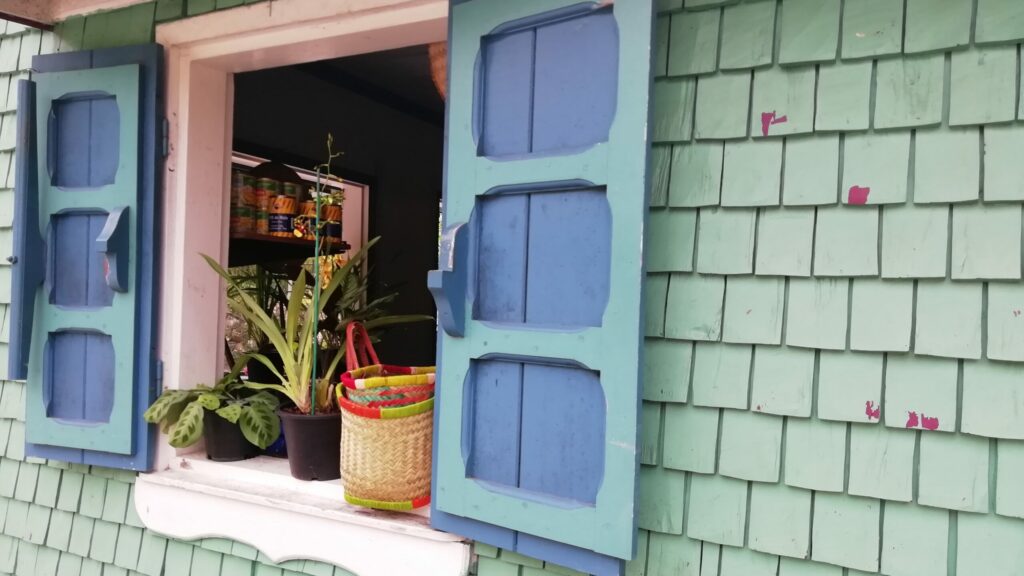



No Comments